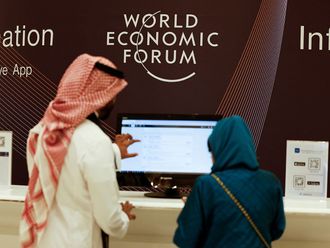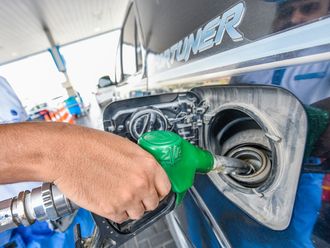Europe's debt crisis may keep the global markets on the edge — but for China, this seems to be an opportunity to spread its risks. With tumbling international financial markets and fragile recovery of the world economy, China is harping on what it knows best — ‘brick and mortar recovery' — by upping the trade and investment quotient with the Middle East.
Trade volume between China and Middle Eastern countries totalled $190 billion (Dh697.8 billion) in 2010, rising nearly 30 percent year-on-year.
In the first half of this year, China's trade with the Arab states reached a record high to hit $120 billion despite turmoil in western Asian and north African region.
While trade in the disturbed regions declined by 30 per cent year-on-year, volumes with the stable nations surged by 46 per cent. By 2015, China has set a $200 billion trade target with Arab nations, as revealed in the recently concluded second Sino-Arab meet in Ningxia, north-west China.
In its quest for diversification and ‘go global' strategy, China is leaving no sector unexplored, combining soft cultural power with core industries to boost its stake in Middle East and North Africa.
From halal food industry to refining complexes, the Middle Kingdom is concentrating on the Middle East to build its bulwark against the rocky global financial climate.
Soft and crude
Although only a minor player in the $500 billion halal food export sector, China is working on its Muslim-dominated provinces to build up its this industry. Halal food is consumed not only by 1.5 billion Muslims around the world, but also by at least 500 million non-Muslims, according to estimates.
As of now, China's halal food exports stand at only $100 million each year and it has much room to tap the world market.
With a population of 20 million Muslims, concentrated mainly in the north-western parts of the country, China has applied its precision planning skills to beef up halal food trade with Malaysia, Turkey and Middle Eastern market, going so far as to acquire halal food certification from Saudi Arab, Egypt and Qatar.
But it is in the core petrochemical sector, that Middle East has become something of the lynchpin.
Gulf states are the leading crude suppliers to China now. In 2010, China alone imported some $65 billion or 16 per cent of the total crude export from the Middle East. In addition, China also imported and exported petrochemical, chemicals and various finished products from and to GCC countries.
Companies like Sabic now have strategic importance to China, especially with their strong market position and willingness to invest in plant expansion and R&D.
Sabic has a new partnership with Sinopec to build a $1 billion polycarbonate plant in Tianjin, to be fully operational in 2015.
It is also building a 60,000 square metre research and development centre in Shanghai.
Kuwait Petroleum Corporation is also building a joint refinery with Sinopec in southern China's Guangdong province, which will have an oil refining capacity of 300,000 barrels per day and produce one million tonnes of ethylene per year. The refinery will be among China's largest joint ventures in the oil sector when it comes into operation by 2013.
Gulf-bound
The nature of Chinese investment and trade relationship with the Middle East is seen to maturing with more outbound investment. China's outbound direct investment has grown strongly this year with ODI rebounding in August to grow 33 per cent from a year earlier. This underscores an increasing interest in overseas activity, from the world's fifth-largest investor, amid the growing global debt crisis.
Bahrain, which is sometimes called the gateway for Chinese investments to the Gulf, is not only eyeing expanded trade volume but greater Chinese investment within its borders.
China's trade with Bahrain reached $1.05 billion in 2010, up 53.1 per cent year-on-year. Bahrain is wooing Chinese investments to its priority industries including housing, construction, downstream manufacturing of aluminum, petrochemicals and food production.
Chinese companies are also looking to participate in the building of 50,000 homes worth $5 billion in Bahrain.
Expanding its Middle East flank is one way for China to reduce its vulnerability to the West.
The writer is a freelance journalist based in China.












